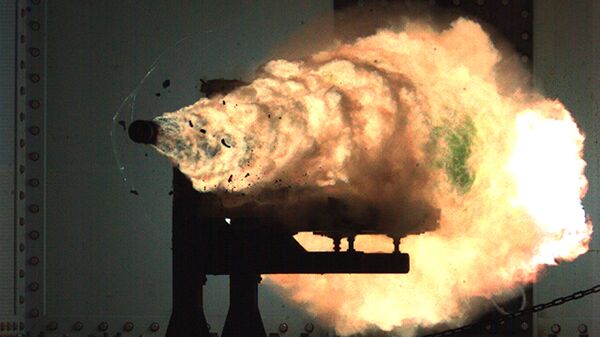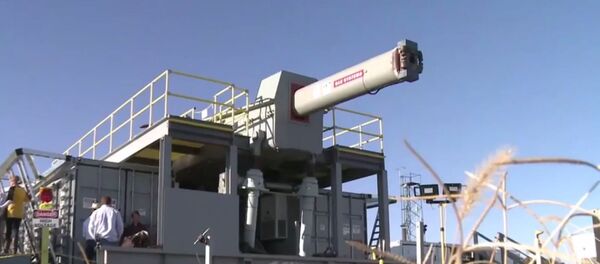A photo of a huge gun barrel situated at the bow of a People's Liberation Army-Navy (PLA-N) Type 072-II amphibious warfare ship popped up on military technology Twitter feeds on Wednesday.
— 下个ID见 (@N3tvsGwZ2pGKEp4) February 1, 2018
According to a translation of a former PLA-N officer's analysis, "everyone knows that the EM [electromagnetic] gun is under development, it's said that it was jointly developed by BIT [Beijing Institute of Technology] and a certain institute from CASIC [China Aerospace Science and Industry Corporation], I'm not so sure about this, but doesn't matter, it's developed by Chinese anyway."
055A🤔 pic.twitter.com/hgrNo0ym46
— dafeng cao (@xinfengcao) February 1, 2018
The officer, who has been involved in building PLA-N vessels for decades, said the electromagnetic railgun was approved as part of a larger plan five or six years ago, so "it is reasonable as per schedule the prototype is doing aboard test."
The banner said, "Provide the first-class naval weapon & equipment for building the first-class navy in the world." That's pretty assertive and ambitious. pic.twitter.com/4L9cuh1tEX
— dafeng cao (@xinfengcao) February 2, 2018
An electromagnetic rail gun fires projectiles at high speeds without the use of chemical propellants. According to the US Navy's Office of Naval Research, "magnetic fields created by high electrical currents accelerate a sliding medal conductor, or armature, between two rails to launch projectiles at 4,500 mph." Since the rounds travel so fast, creating a huge amount of kinetic energy, there is no need for any extra explosives attached to each rounds — them smashing into their target is enough to destroy it.
US, Indian and Russian weapons developers have tested electromagnetic railgun prototypes, but the above ship would mark the world's first warship to be equipped with the weapon.
According to Izvestia, railguns will form the foundation of the electromagnetic artillery of the future. On warships, the guns can strike targets 300 to 400 km away, and orbiting the Earth in space, Izvestia reported in late January.



